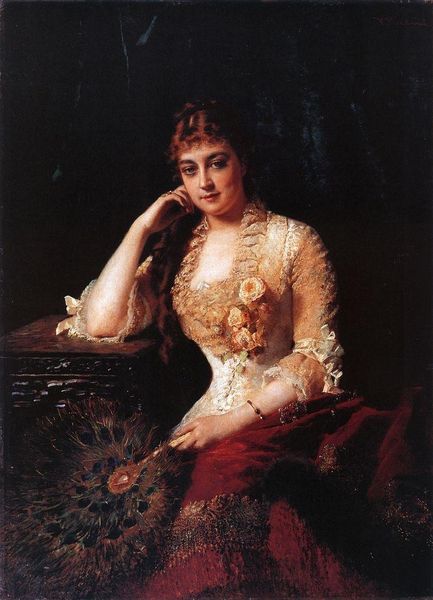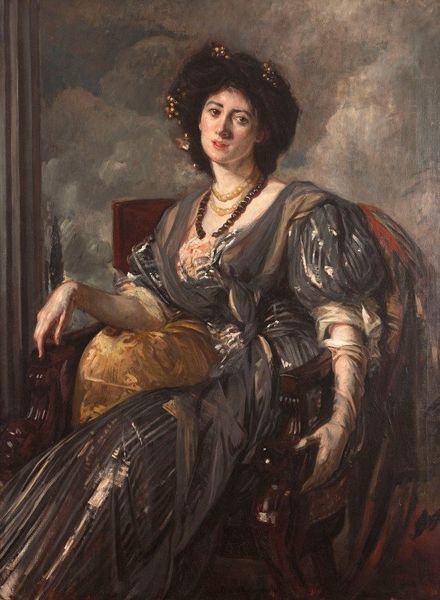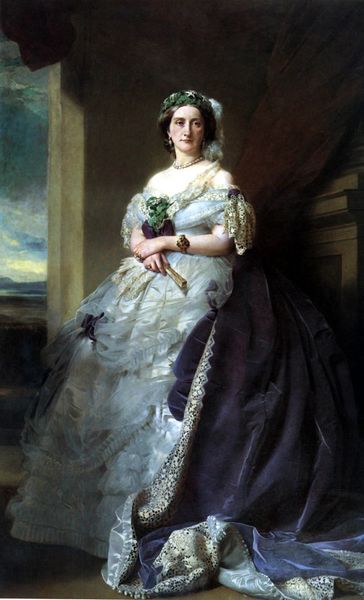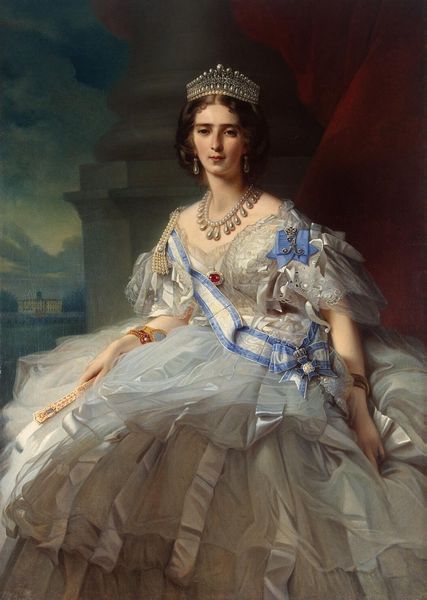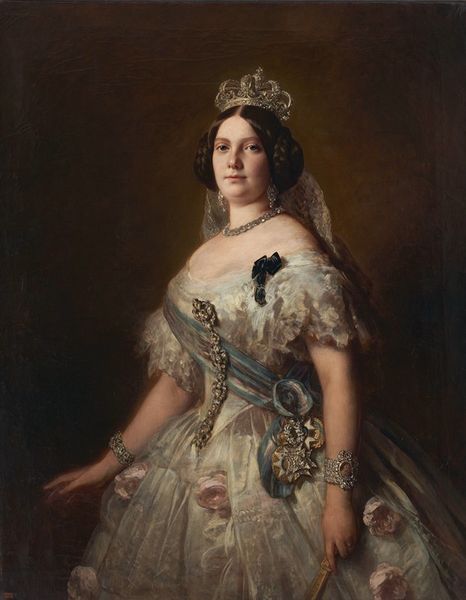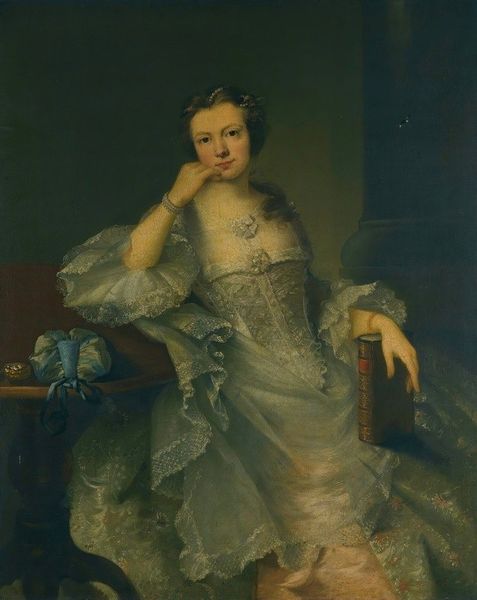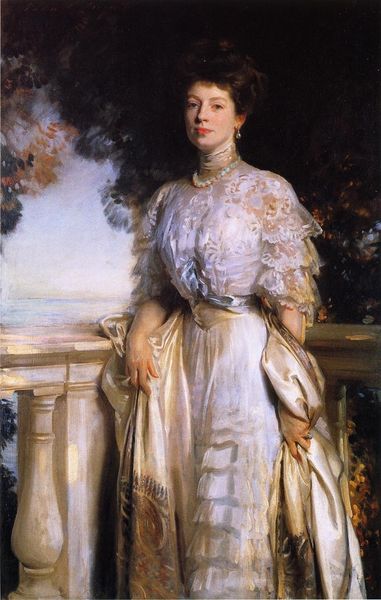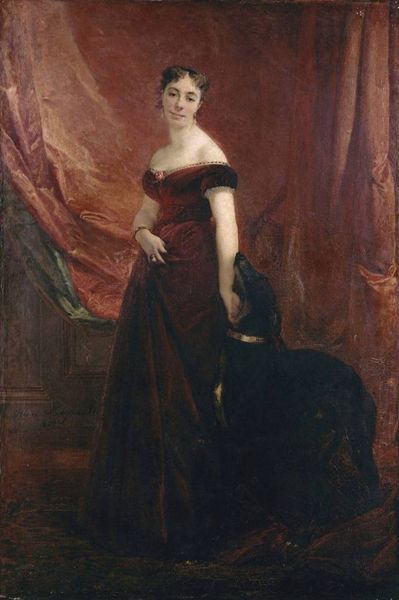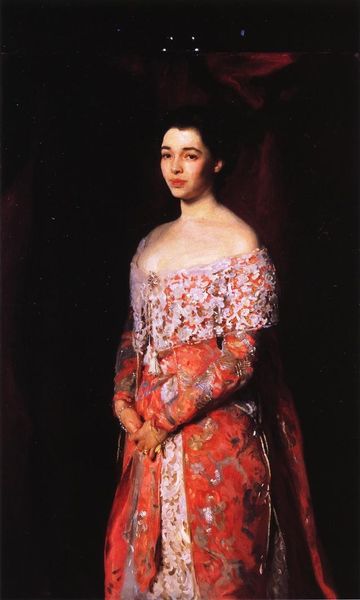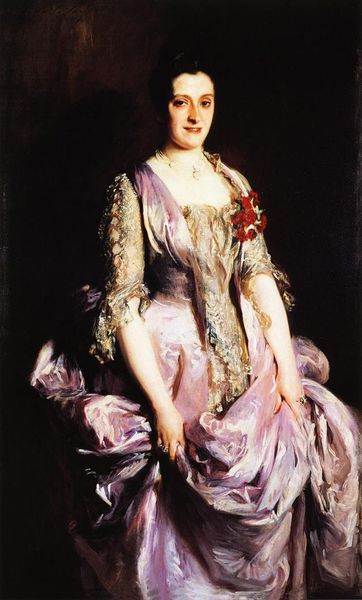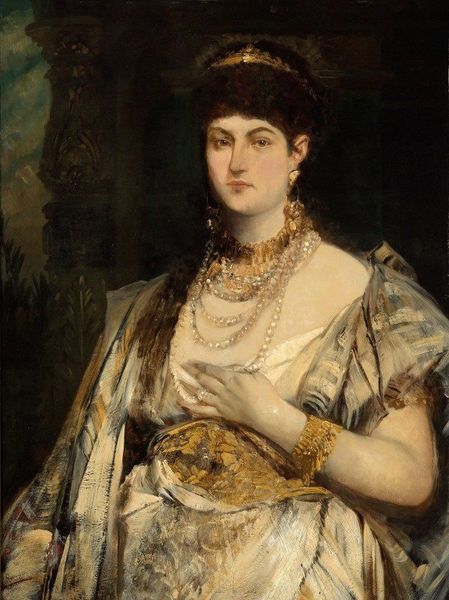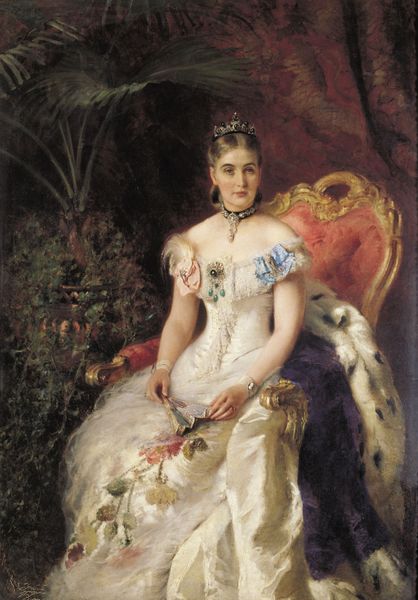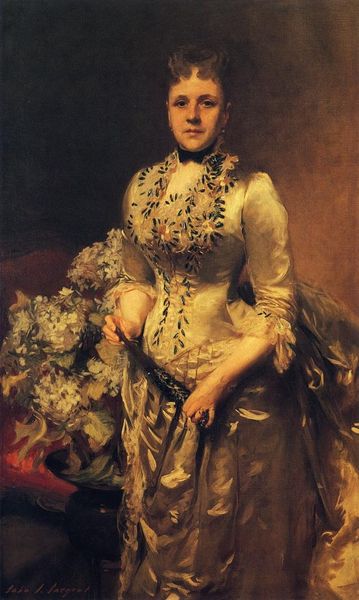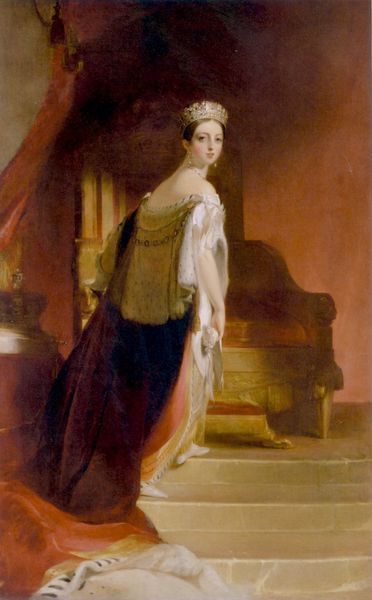
Copyright: Public domain
Editor: Here we have Konstantin Makovsky's "Portrait of V. Morozova," an oil painting from 1884. The subject's regal posture and shimmering gown definitely give off an air of aristocracy. What compositional elements strike you most when you look at this painting? Curator: Formally speaking, the contrasting textures are compelling. Note the sharp details of the lace against the smooth, almost liquid quality of the satin. This juxtaposition serves to animate the surface of the canvas and directs the viewer's eye. What role might color be playing in establishing a hierarchy of importance here? Editor: The cool blues and golds really dominate, pushing the darker background and even the red chair into a secondary role. So the focus remains on her dress, jewelry and pale complexion. Is the positioning of Morozova within the frame meaningful? Curator: Indeed. Observe how the artist employs the diagonal line of her body, leading from the lower left to the upper right. This dynamic arrangement infuses a sense of movement and prevents the composition from becoming static. Note also how this line directs the viewers eyes to Morozova's face which could then be described using binary oppositions, e.g., rigid composure/soft gaze. Editor: It's interesting how such careful use of line and color brings so much movement to a seemingly still portrait. I hadn't considered the impact of diagonal lines. Curator: The artist guides us not only through surface qualities, but into relationships with semiotic components through pure form. Understanding the painting this way helps us recognize the deep underlying structure in artworks, not just superficial or external details. Editor: I'll definitely look for these compositional tricks in other portraits. Thank you for explaining these key aspects!
Comments
No comments
Be the first to comment and join the conversation on the ultimate creative platform.
